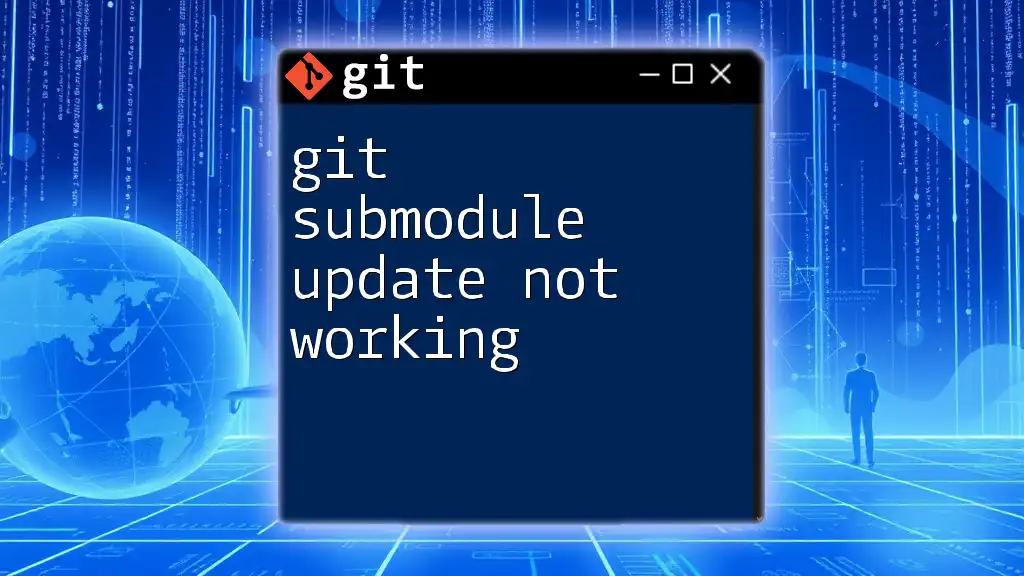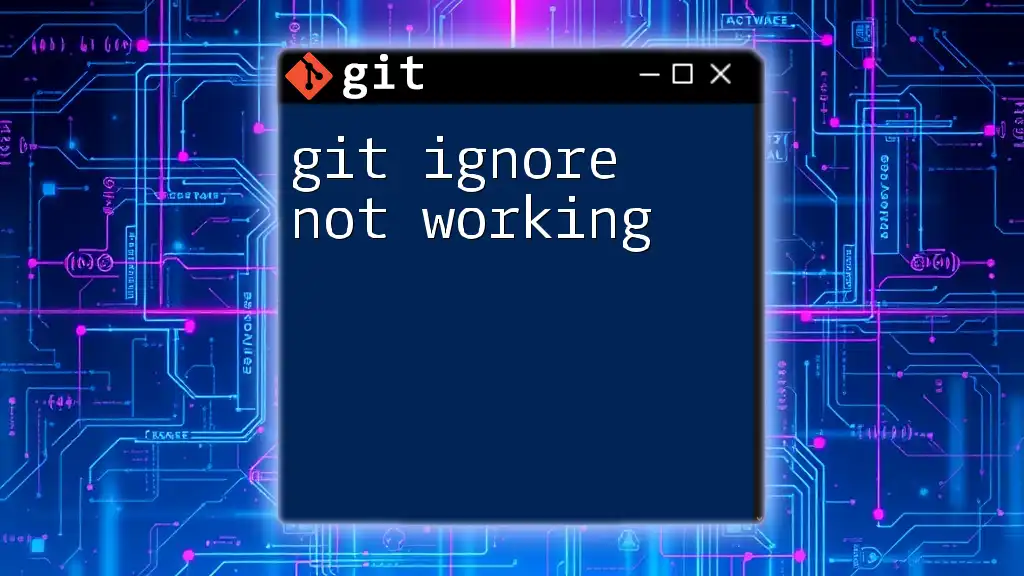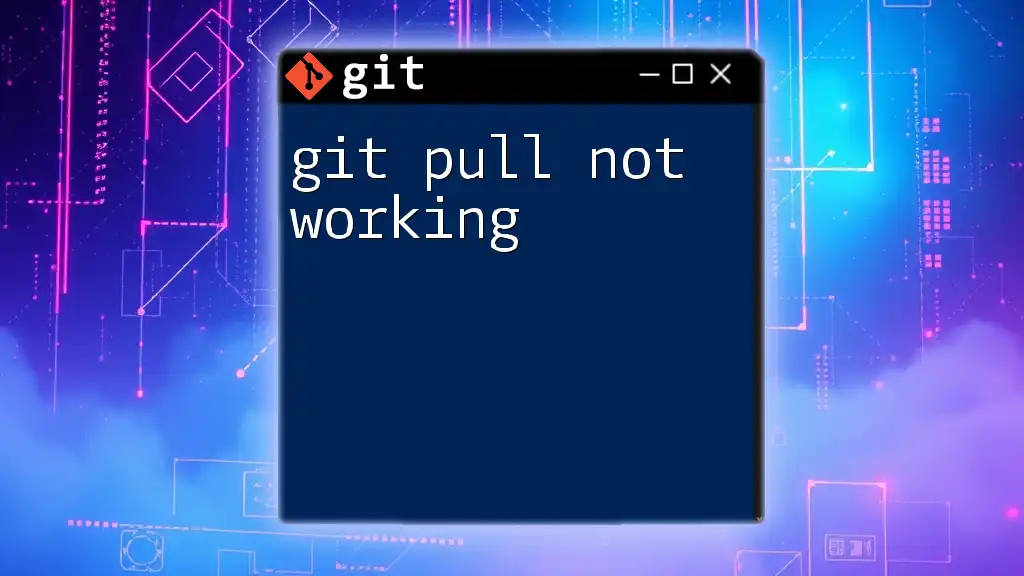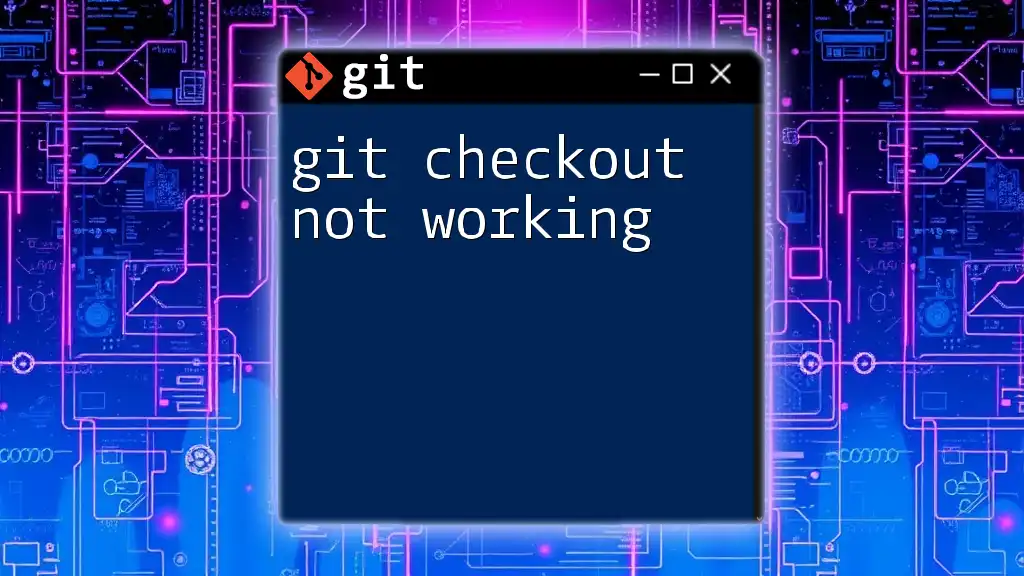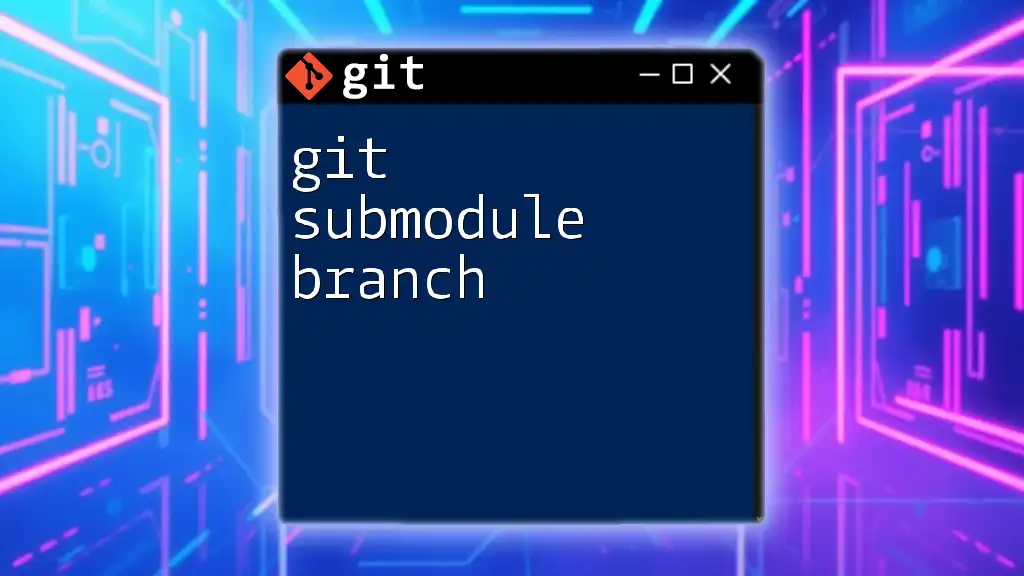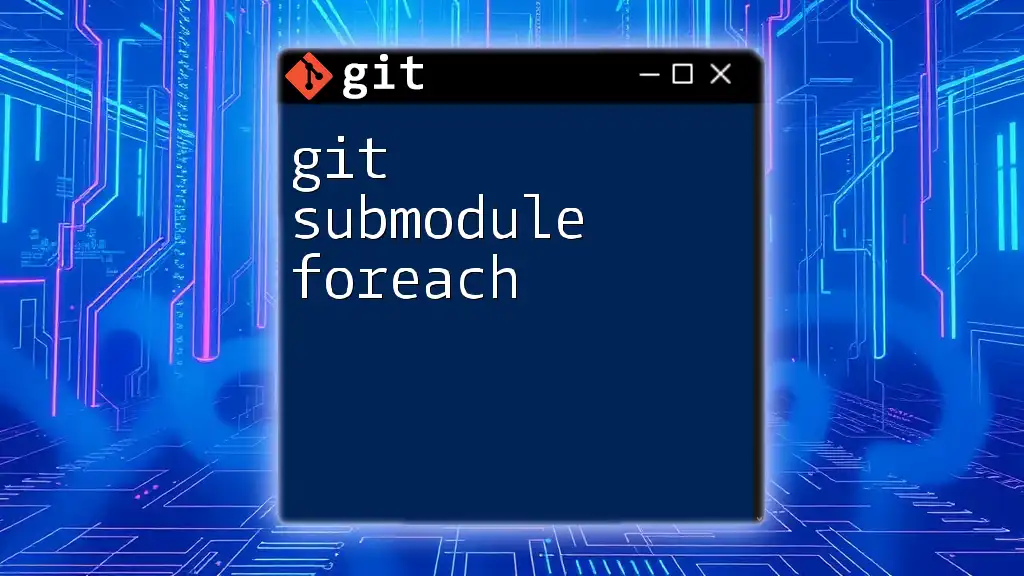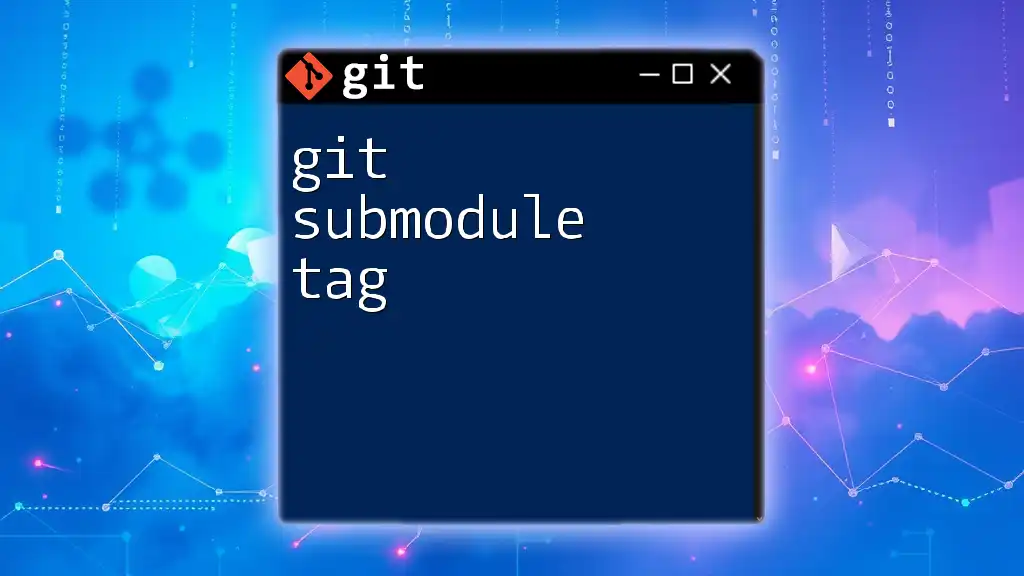When `git submodule update` is not working, it may be due to an inconsistency in the submodule's commit or a lack of proper initialization; you can resolve this by ensuring you initialize and update the submodules correctly with the following commands:
git submodule init
git submodule update --recursive
Understanding Git Submodules
What are Git Submodules?
Git submodules are a powerful feature within Git that allows you to incorporate and manage external repositories as part of your own project. This is particularly useful when you’re relying on libraries or tools maintained in separate repositories. For example, if you have a main project that depends on a shared utility library, you could include that library as a submodule, allowing for easier version management and integration.
Architecture of Submodules
Submodules are essentially repositories nested within a parent repository. When you include a submodule, what you are really doing is pointing to a specific commit in another repository. This means that each submodule has its own distinct history and can be updated independently. Understanding this architecture is crucial when troubleshooting why you might encounter issues with `git submodule update`.
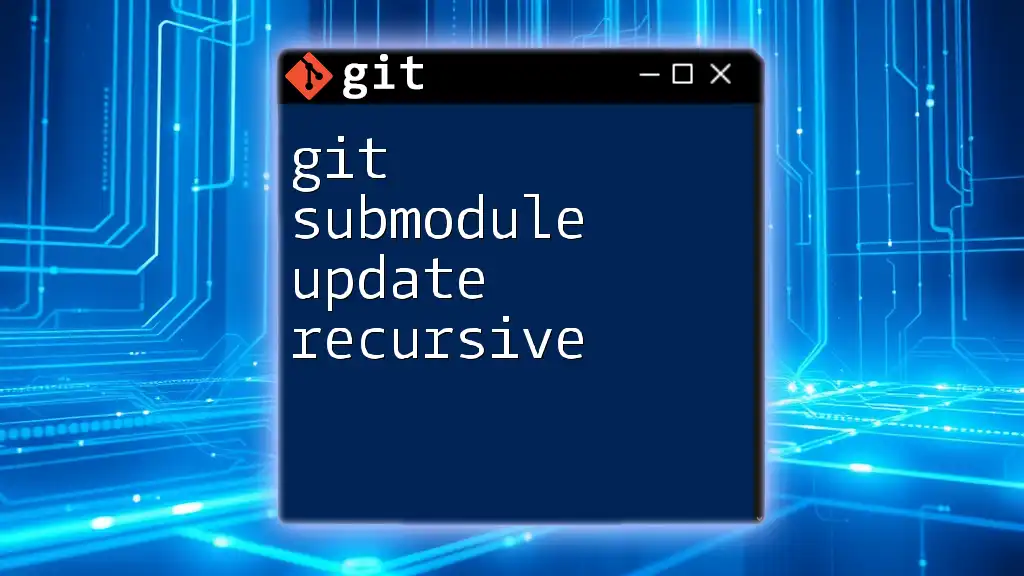
Common Reasons for "git submodule update" Issues
Missing or Incorrect Submodule Initialization
One of the foremost reasons for encountering problems with `git submodule update` is that submodules might not be properly initialized. In Git, before you can effectively update submodules, you need to run the command:
git submodule init
This command initializes your submodules according to what's defined in the `.gitmodules` file. If you skip this step, Git won't know to check out the submodules, resulting in an update that doesn't work as expected.
Incorrect Submodule URL Configuration
Sometimes, the URLs for your submodules are misconfigured. You can check the URLs for your submodules by inspecting the `.gitmodules` file located in your repository’s root directory. This file contains key information on where Git expects to find each submodule. If the URL has changed, you can fix it like this:
git config submodule.<submodule-name>.url <new-url>
Changes in the Main Repository
Interactions between your main repository and its submodules can lead to issues. Specifically, if you have made changes in the main repository that rename, delete, or change submodules, you might run into conflicts. Always ensure you have the latest updates in your submodules by issuing:
git submodule update --recursive
This command not only updates the immediate submodules but also ensures that any sub-submodules are also updated.
Detached HEAD State
When working with submodules, you may find yourself in a detached HEAD state. This state occurs when the repository is pointing to a specific commit rather than a branch. When submodules are not pointing to any branch but instead a specific commit, use the following command to check your HEAD state:
git status
If your submodule is in a detached HEAD state, you’ll need to decide how to manage its changes — either by checking out a specific branch or by committing changes to a new branch.

Troubleshooting "git submodule update" Issues
Cloning a Repository with Submodules
When initially cloning repositories that contain submodules, it is crucial to use the `--recurse-submodules` flag. This ensures that all submodules are cloned and initialized immediately, like so:
git clone --recurse-submodules <repository-url>
Failing to use this option will mean your submodules will be uninitialized and can lead to errors later on when you try to update them.
When to Use `git submodule update --init`
In many cases, especially in a newly cloned repository, you may need to run:
git submodule update --init --recursive
This command not only initializes but also updates all submodules, ensuring they are pointing to the correct commits. It’s a vital troubleshooting step when facing issues with submodule updates.
Forcing a Submodule Update
In rare situations, you might need to force a submodule update if the submodule has been modified locally and conflicts with the expected state. To do this, you can run:
git submodule update --force
However, use this command with caution as it may overwrite local changes in the submodule.
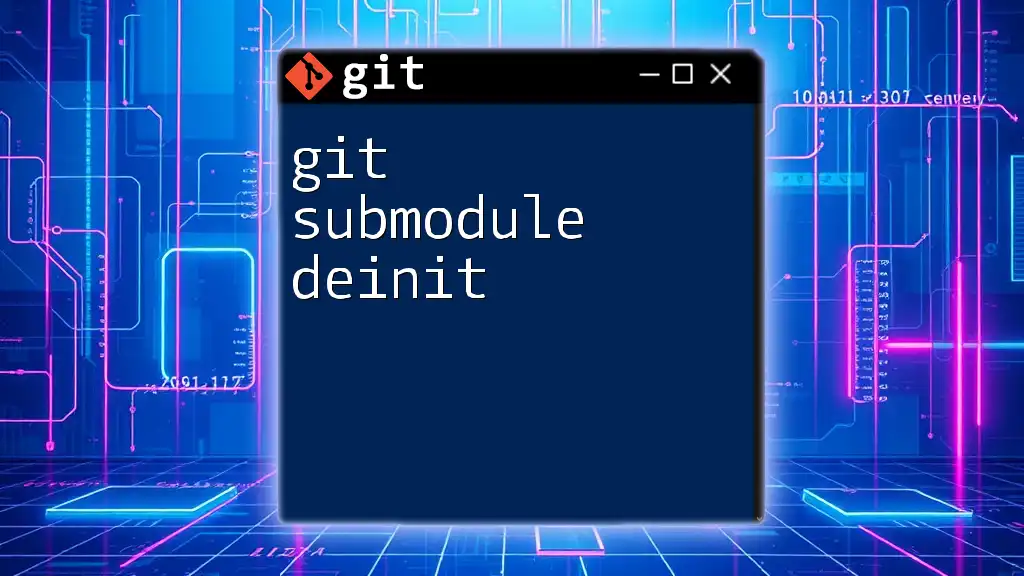
Advanced Troubleshooting Techniques
Manual Submodule Cleanup
If problems persist, you may need to manually clean up and reinitialize submodules. Here’s how to do this:
-
Deinitialize the submodule:
git submodule deinit <submodule-name> -
Remove the submodule reference:
git rm <submodule-name> -
Re-add the submodule with the correct URL:
git submodule add <repository-url> <submodule-name>
Following these steps ensures that any underlying issues are resolved.
Using Verbose Output for Debugging
To gain additional insights during the update process, you can run Git commands with verbose output. This can be particularly helpful for identifying problems with submodule updates:
git submodule update --verbose
This command will provide detailed output about what Git is doing, making it easier to diagnose issues.
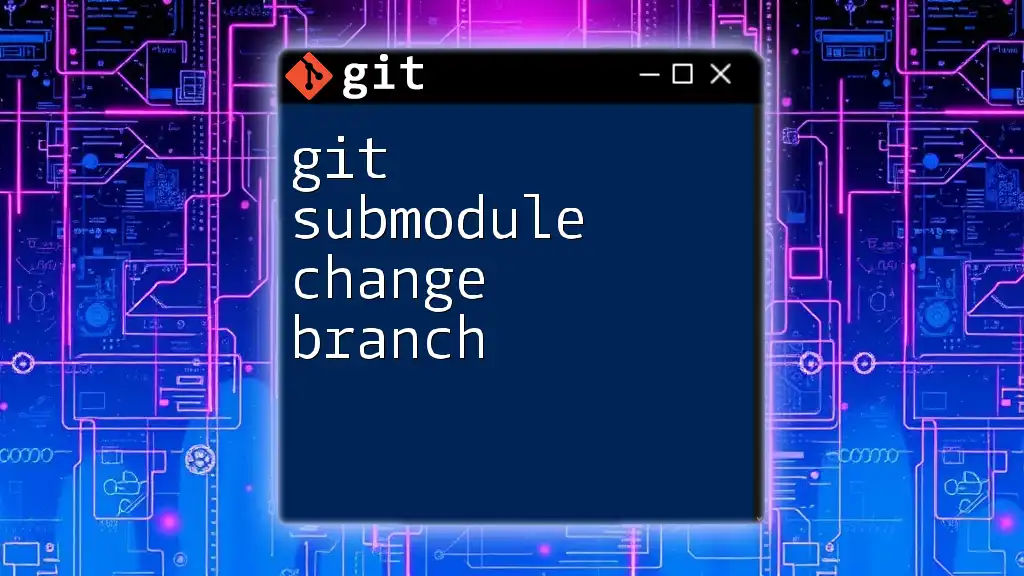
Best Practices for Managing Submodules
Regularly Update Submodules
It’s essential to regularly update your submodules to avoid compatibility issues. This can help in making sure that your project runs smoothly and that you’re not left stuck on outdated libraries.
Keep .gitmodules Updated
Ensure that your `.gitmodules` file remains updated, especially when adding or changing submodules. This file provides vital information for initializing and updating submodules correctly.
Documentation and Communication
Finally, document the usage of submodules effectively within your repository. Clear documentation aids in onboarding new team members and ensures that everyone understands how to manage dependencies properly.
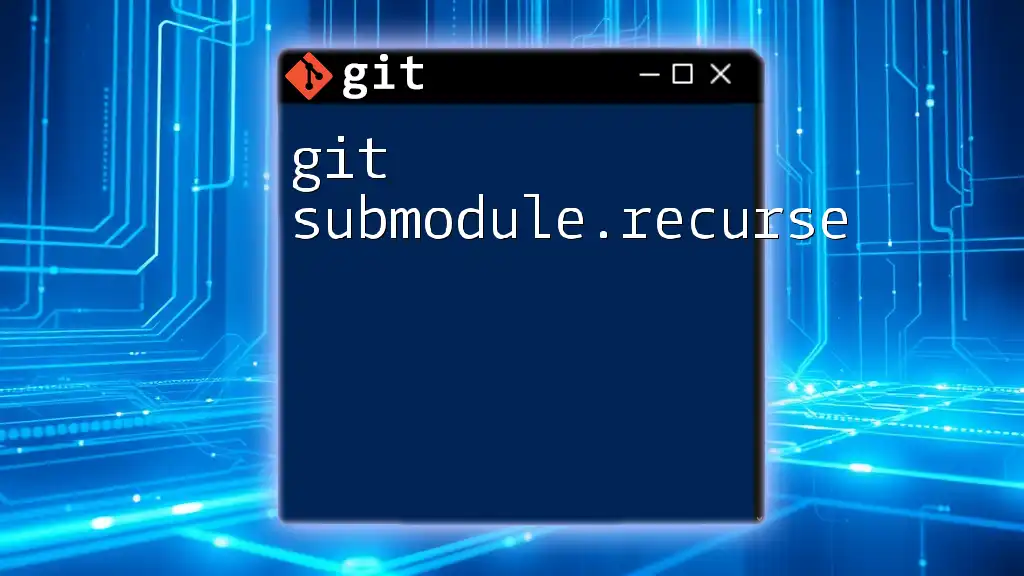
Conclusion
In summary, tackling “git submodule update not working” issues involves understanding how Git handles submodules and recognizing potential pitfalls. From ensuring proper initialization to understanding detached HEAD states, following these guidelines will empower you to manage submodules effectively and troubleshoot any arising issues. Always remember to communicate changes and maintain proper documentation to enhance project collaboration.

